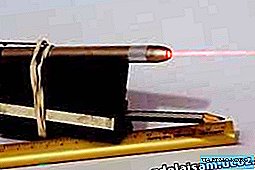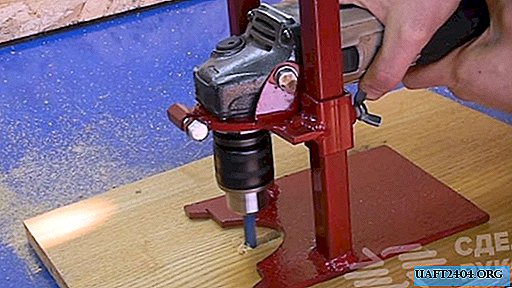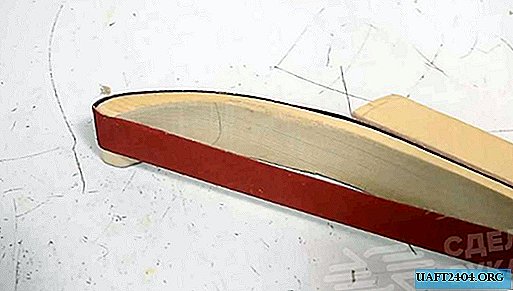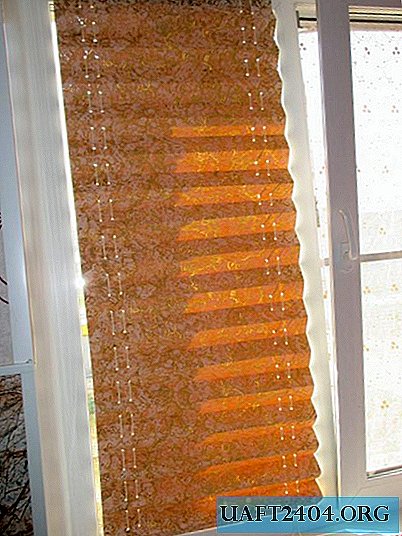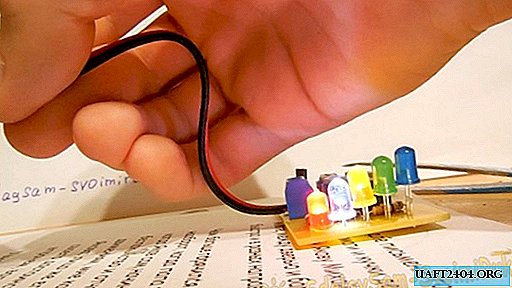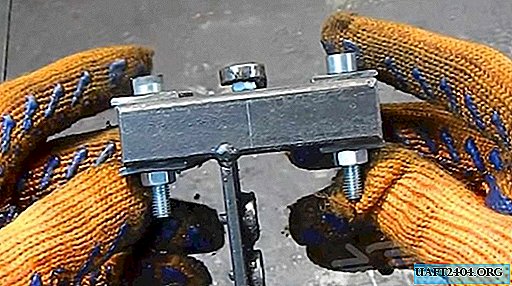Share
Pin
Tweet
Send
Share
Send
The design is based on a Moxon vice with two screws - a reliable, low-cost and easy-to-manufacture option. In addition, a do-it-yourself tool is twice as pleasant to use as purchased. Therefore, catch instructions on how to make a carpentry vice from wood with your own hands.

Will need
Necessary materials:
- 2 pieces of plywood 10 mm thick (sponge on a workbench - 480 x 90 mm, the second no more than 250x80 under the handles),
- Bar 45x90 mm, length 480 mm;
- Drills of various diameters - 1, 4, 8, 10, 12 mm;
- Studs M10x250 - 2 pcs. (I would recommend using all the M12 fasteners, but I did not find any driving nuts of this diameter);
- Wood screws;
- M10 driven nuts - 4 pcs.;
- Ring crowns for wood of various diameters;
- Forstner's drill (for lack of use a feather drill on 22);
- Wood glue;
- A short piece of steel wire with a diameter of 1 mm.
Tools required:
- Screwdriver;
- Clamp - 2 pcs.;
- Hammer;
- Square;
- Pencil;
- Chisel (not needed if you use Forstner drill);
- Nippers.
Step-by-step instructions for manufacturing a joiner's vice:
1. We measure 10 cm of plywood on both sides, center and mark the points of future screw holes.
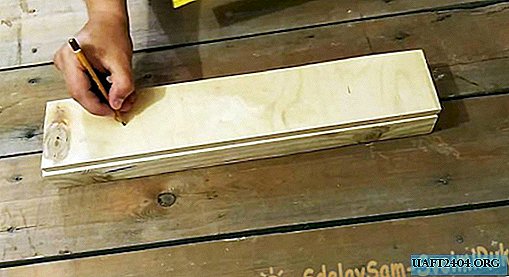
2. For convenience, we fix plywood and a beam between each other with a clamp.
3. Drill a hole 12 mm in diameter at the marked points. Use a drill depending on the diameter of your studs plus 2 mm.
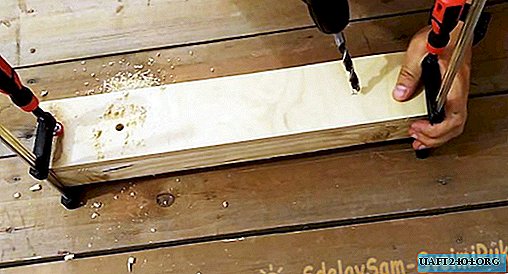
4. Using a drill, we make 3-4 mm holes for self-tapping screws for further fastening the future fixed part of the vise to the workbench. We place the holes 2 at the edges and 2 in the middle, making a slight indentation from the edges.
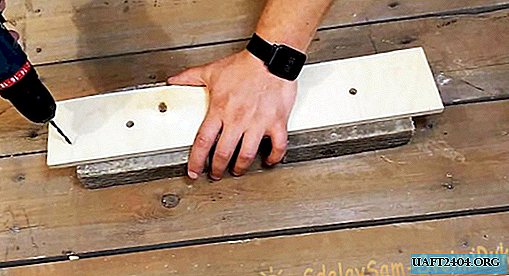
5. In order to guaranteely hide the self-tapping heads with a drill for metal with a diameter of 12 mm, we make small recesses in the holes made.
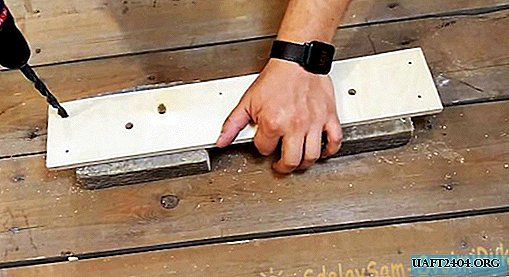
6. We fix the plywood to the workbench using self-tapping screws on wood.
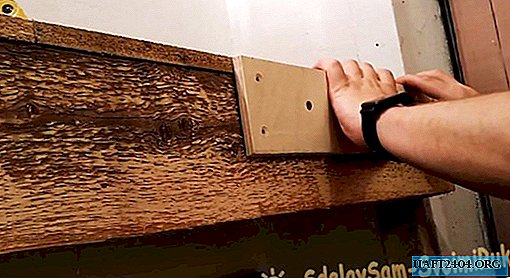
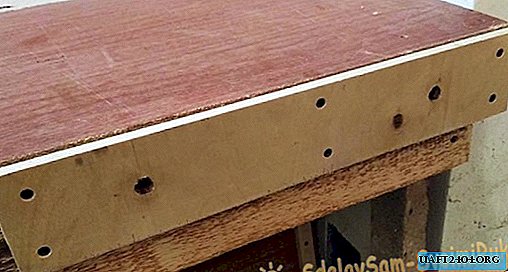
The stationary vise sponge is ready.
7. Next, using the holes for the studs (12 mm) as a conductor in the plywood, drill the workbench itself.
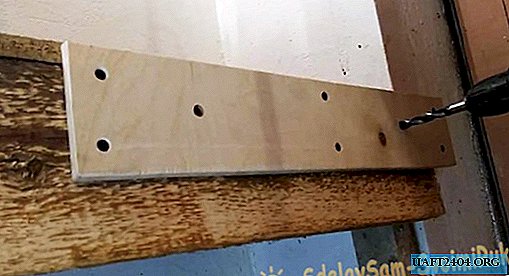
8. Take 2 driven nuts M10 (they are also called mortise) and drive them to the workbench from the back.
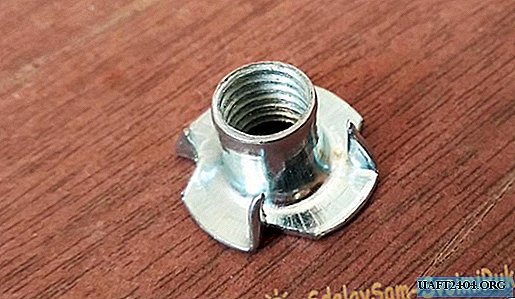

9. We take a small segment of plywood, mark and center on it the diameters of future handles with the help of crowns on wood.
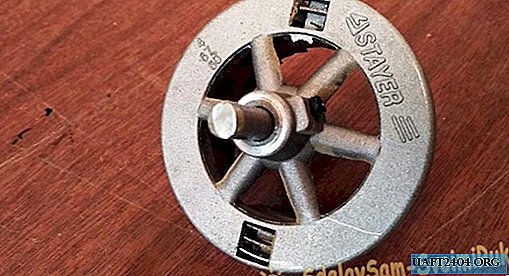
Select the diameter of the handles for your hand - I chose 67 and 54 mm.
10. It should be noted 2 large washers and 2 smaller in diameter, 1.5-2 cm.
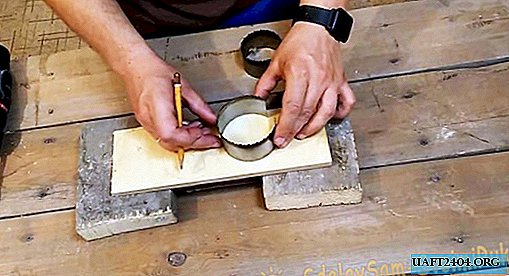
11. Drill a hole in the middle of each marked diameter, the diameter of which will coincide with the diameter of the guide drill in the crowns - in my case it is 8 mm. You can do without this step, and immediately drill a hole with a regular central drill of ring crowns.
12. Using crowns, cut the washers and process their edges with sandpaper.
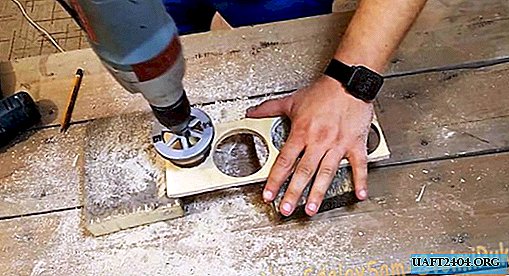
13. With a drill equal to the outer diameter of the nut (12 vv), expand the holes in the small washers.

14. In large washers we drill small indentations with a 22 Forstner drill, so that the nuts of the nuts are inserted into them without gaps. For lack of it, I had to make holes with a feather drill and work a bit with a chisel.
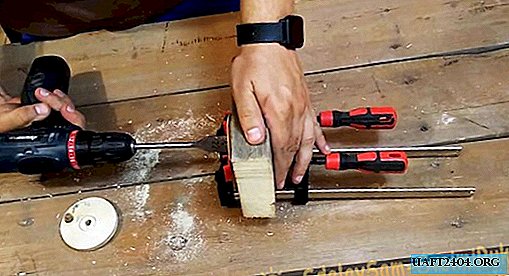
15. Insert the mortise nuts and drive them into the small washers.
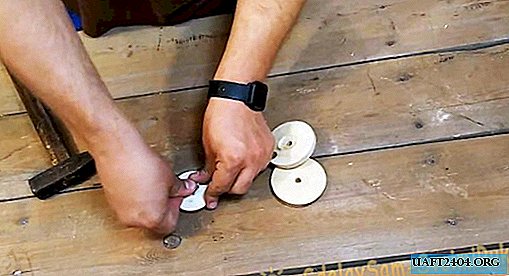
16. Screw the studs flush with the nut head.

17. Now you need to lock the threaded connection. Attach both structures with a clamp to a comfortable surface. I took advantage of the beam for future clutches.
18. With a 1 mm metal drill, make holes in the caps of the nuts on the thread boundary. Drilling depth no more than 1 cm.

19. Bite pieces of steel wire of the same length and insert them into the drilled holes to fix the structure.
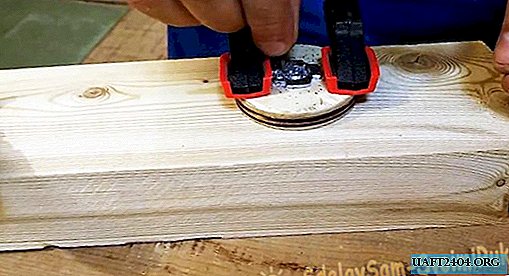
20. Lubricate the sides of the washers with glue on the wood and tightly fix them together coaxially, fixing with a clamp until it dries completely.

21. Drill 3-4 mm on the inside of the handles for two holes on the sides of the stud with a depth of not more than 10 mm.
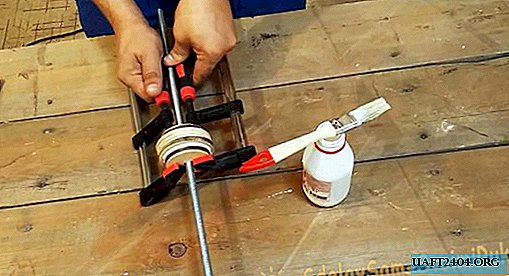
22. Make secret chamfers under the caps of the screws.
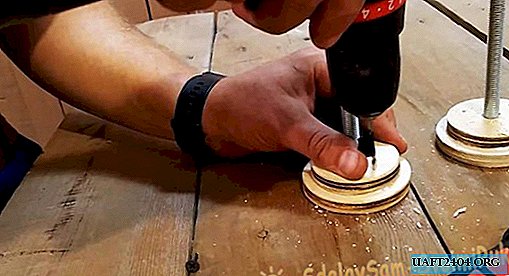
23. For reliability, fasten the handle parts with wood screws.
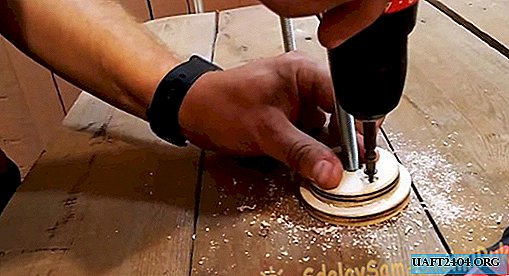
24. Insert the studs into the holes in the large bar, screw them to the main part on the workbench.
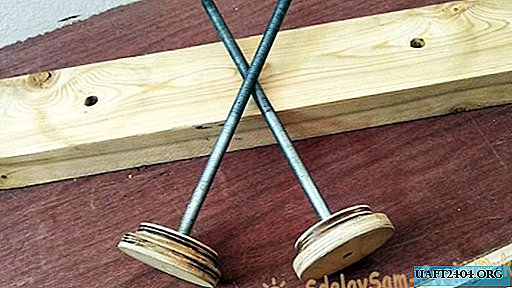
25. The vise is ready.
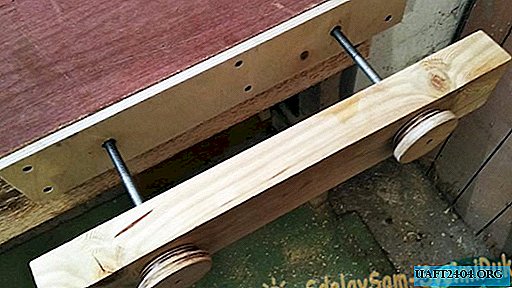


For detailed instructions on how to make a vise for a work bench with your own hands, see the video.
Share
Pin
Tweet
Send
Share
Send

